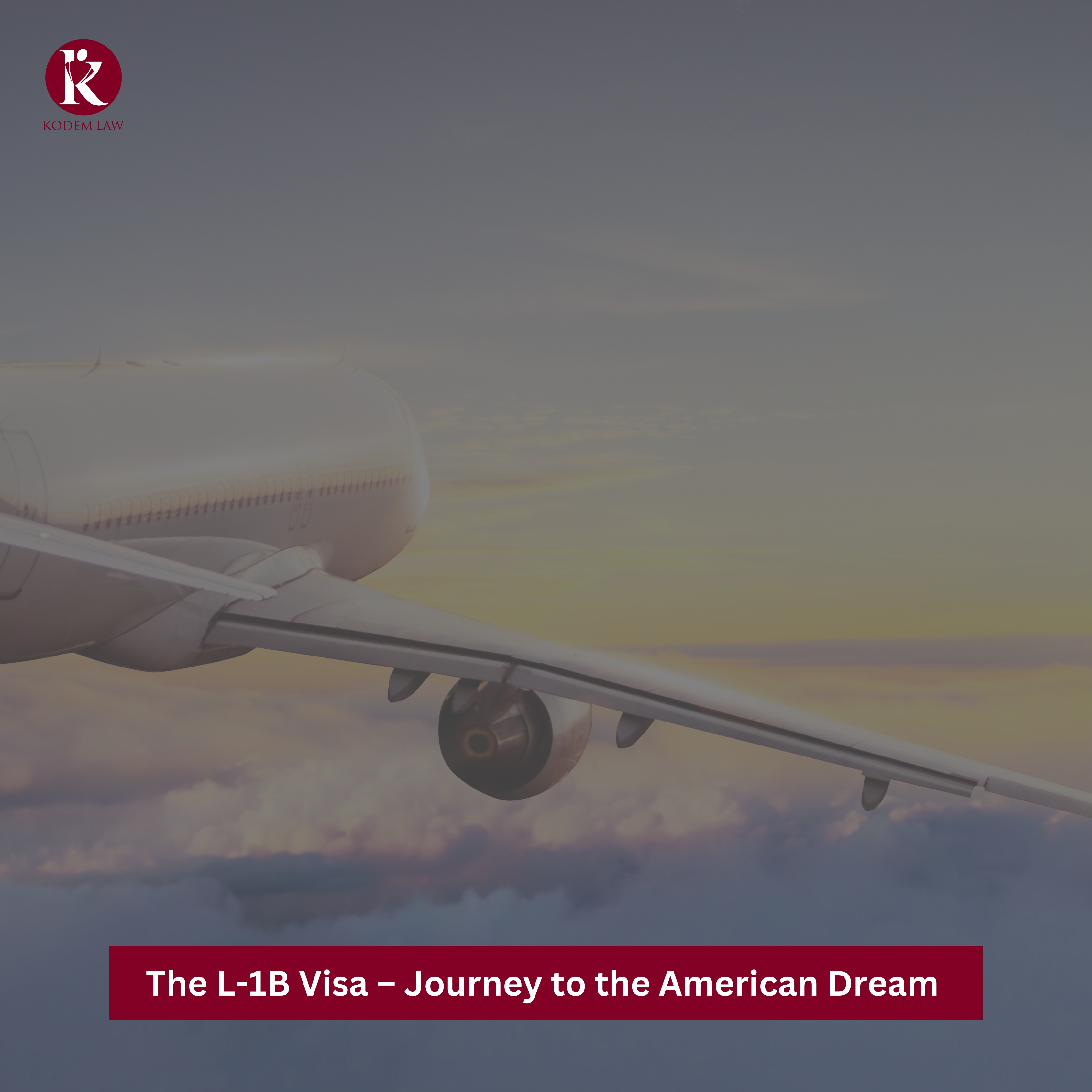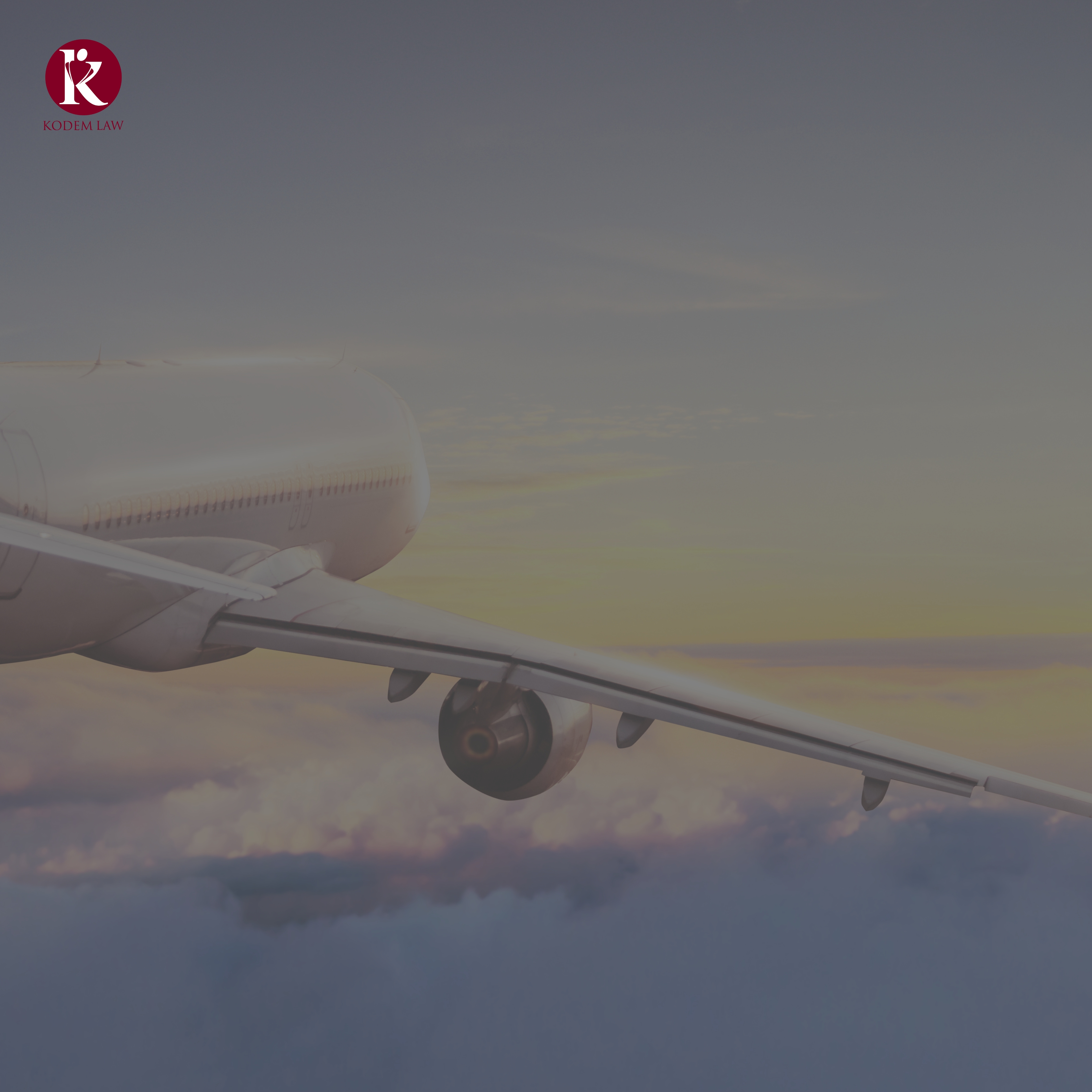
Are you a skilled professional with specialized knowledge seeking a gateway to the United States? The L-1B visa might be your ticket to fulfil your American dream.
In this blog, we will explore the ins and outs of the L-1B visa, its benefits, requirements, processing times, and more. So, fasten your seatbelts as we embark on this captivating journey!
Understanding the L-1B Visa
The L-1B visa is a temporary nonimmigrant visa for employees with specialized knowledge. It facilitates the transfer of multinational company, employees to the U.S. New offices receive a 1-year visa, existing offices get 3 years, extendable in 2-year increments up to 5 years. This visa is crucial for leveraging specialized expertise, enhancing company operations, and fostering international business relationships while promoting employee career growth.
L-1B Visa vs. L-1A Visa
Some of the major key differences between the L1-B and L1-A visa are as follows:
Aspect | L-1B Visa | L-1A Visa |
Eligible Roles | Specialized knowledge roles | Managerial or executive positions |
Initial Duration | 1 year for new office, 3 years for existing office | 1 year for new office, 3 years for existing office |
Extensions Available | Yes, in 2-year increments, up to 5 years | Yes, in 2-year increments, up to 7 years |
Responsibilities | Specialized knowledge contribution | High-level decision-making, management |
When to Choose L-1A Visa
- Managerial or Executive Role: If you hold a high-level managerial or executive position with authority for decision-making and team leadership, the L-1A visa is appropriate.
- Long-Term Career Goals: Individuals with long-term career goals within the organization and a desire to take on a leadership role should consider the L-1A visa.
When to Choose L-1B Visa
- Specialized Knowledge: If your role primarily involves providing specialized knowledge critical to the company’s U.S. operations, the L-1B visa is the right choice.
- Short-Term Assignment: Professionals looking for a shorter-term assignment and whose primary contribution is specialized expertise might opt for the L-1B visa.
Note: Selecting between the L-1B and L-1A visas should align with your job responsibilities, career aspirations, and your company’s operational structure. This decision ensures a successful intracompany transfer to the United States, tailored to your professional and organizational needs.
What are L-1B Visa Eligibility and Requirements?
- Employer-Employee Relationship: To qualify for an L-1B visa, there must be a valid employer-employee relationship between the foreign company (the employer) and the U.S. company (the petitioner).
- Qualifying Organization: The U.S. employer must be a subsidiary, affiliate, parent, or branch of the foreign company. Both companies should have a qualifying relationship, typically meaning common ownership or control.
- Specialized Knowledge: L-1B visa applicants should possess specialized knowledge that is vital to the company’s U.S. operations. This knowledge should be specific to the organization’s products, services, processes, or proprietary information.
- Previous Employment: Applicants must have been employed by the foreign company for at least one continuous year within the preceding three years. This period should have been in an executive, managerial, or specialized knowledge role.
- Intending to Work in the US: Applicants must have the intention to work in the United States in a specialized knowledge role with a U.S. company. The primary purpose of the L1B visa is intracompany transfer.
- Qualifying Relationship: The foreign and U.S. companies must maintain a qualifying relationship throughout the visa holder’s stay in the U.S. If changes occur in the organizational structure, it could impact the L-1B status.
What are the Documents Required for L-1B Visa?
Form I-129:
- Form I-129 is the initial step in the visa application process, and it is the responsibility of the U.S. employer to complete and file this form.
- The employer initiates the petition to bring a nonimmigrant worker to the United States for a specific job or project.
Supporting Documents:
- Proof of the qualifying relationship between U.S. and foreign companies.
- Job offer letter detailing the position, responsibilities, and specialized knowledge.
Proof of Prior Employment:
- Documentation proving one year of continuous employment abroad with the foreign company.
Employer-Employee Relationship Documentation:
- Evidence demonstrating the employer-employee relationship.
Documentation of Specialized Knowledge:
- Details substantiating the applicant’s specialized knowledge, including specific projects, technical skills, training records, or patents.
Proof of Advanced Expertise:
- Additional documentation demonstrating advanced knowledge or expertise in the company’s products, services, research, equipment, techniques, or management methods.

L-1B Visa Processing Time
- USCIS Processing Time: The United States Citizenship and Immigration Services (USCIS) typically processes L-1B visa applications in a matter of several months. However, processing times may vary based on factors such as the USCIS workload and the applicant’s country of origin.
- Premium Processing Option: If you’re in a hurry, you can opt for premium processing by paying an additional fee. With premium processing, USCIS guarantees a response within 15 calendar days. While this expedites the initial response, it doesn’t guarantee visa approval.
Tips to Expedite the L-1B Visa Process
- Plan Ahead: Begin your L-1B visa application well in advance of your intended travel date to minimize processing stress.
- Consider Premium Processing: If time is critical, opt for premium processing to receive a guaranteed initial response from USCIS within 15 days.
- Ensure Complete Documentation: Double-check and submit all required documents accurately to avoid delays in processing.
- Explore Consular Processing: Depending on your home country, consular processing may expedite the overall process, especially if eligible for this option.
- Seek Legal Assistance: Consult with an immigration attorney for guidance, assistance in compiling necessary documentation, and ensuring an error-free application.
- Stay Informed and Respond Promptly: Monitor your application status through the USCIS online case status tool, and promptly respond to any USCIS requests for additional information to avoid unnecessary delays.
Note: While patience is essential in the L-1B visa application process, taking proactive steps, such as opting for premium processing and ensuring accurate documentation, can help expedite the process and increase the likelihood of a smooth and efficient approval.
L-1B Visa Extension: Beyond the Initial Five Years
The L-1B visa is typically granted for a maximum period of five years. After reaching this limit, individuals often explore alternative visa options or pathways to lawful permanent residency (green card). Here are some potential steps and considerations:
- Change of Status – H-1B Visa: If you qualify for an H-1B visa, your employer may consider sponsoring you for a change of status. The H-1B visa is a non-immigrant visa that allows U.S. companies to employ foreign workers in specialty occupations. The H-1B visa has its own set of eligibility criteria, including specific educational and professional qualifications. Your employer would need to file an H-1B petition on your behalf.
- Employment-Based Green Card (EB-2 or EB-3): If your long-term goal is to obtain permanent residency in the U.S., you may explore employment-based immigrant visa categories, such as EB-2 (for individuals with advanced degrees or exceptional ability) or EB-3 (for skilled workers, professionals, and other workers). The green card process involves the sponsorship of your employer, and it usually requires the employer to go through the labor certification process unless you qualify for one of the exemptions.
- PERM Labor Certification: For most employment-based green card categories, the employer must obtain a Labor Certification (PERM) from the U.S. Department of Labor. This process involves demonstrating that there are no qualified U.S. workers available for the position being offered to the foreign worker.
- Consult with an Immigration Attorney: Given the complexities of immigration laws and procedures, it is advisable to consult with an experienced immigration attorney. They can provide guidance based on your specific situation, assess the best course of action, and assist with preparing necessary documents.
Importance of Maintaining Specialized Knowledge for L-1B Visa
- Specialized knowledge is crucial for the L-1B visa. Maintaining this expertise is essential for both the visa extension and your continued value to the organization.
- Your contributions should align with the role and responsibilities that require your specialized knowledge. This ensures you remain a key asset to the organization and its U.S. operations.
- Throughout the extension process, continue to hone your specialized skills and expertise, as this enhances your professional growth and the organization’s success.
- Collaborate with your U.S. employer’s HR and legal teams, as they can provide guidance on the importance of specialized knowledge and help you navigate the extension process.
- Legal compliance and maintaining lawful L-1B visa status, including adhering to all visa conditions and reporting any changes to USCIS, are essential for a successful extension.
L-1B Visa Costs
The application fee associated with the L-1B visa might change, however, the recent costs are as follows:
- Filing fee: $460
- Premium processing fee (optional): $2500
- Fraud Prevention and Detection fee: $500
- An additional fee of $4500 may apply based on specific circumstances related to the L-1A visa
- Attorney Fee as applicable
L-1B Visa Duration
The L-1B visa is a nonimmigrant visa with an initial duration of 1 year for new offices and 3 years for existing offices. It can be extended in 2-year increments, up to a maximum of 5 years. Extensions depend on continued specialized knowledge contributions and the employer-employee relationship.
L-1B Dependent Visa
L-1B visa holders’ dependents, including spouses and unmarried children under 21, are eligible to apply for L-2 visas. The L-2 visa offers several key benefits:
- Legal Residence: L-2 visa holders are permitted to legally live in the United States while the primary L-1B visa holder is working.
- Study Opportunities: L-2 visa holders can enroll in educational institutions in the U.S. They have the chance to pursue academic or vocational studies and enhance their skills.
- Work Authorization for Spouses: One significant advantage is that spouses on L-2 visas can apply for work authorization, allowing them to seek employment in the U.S. This provides an opportunity for dual-income households, enhancing financial stability.
- Duration Tied to L-1B Visa: The L-2 dependent visa’s duration is linked to the validity of the L-1B visa held by the primary visa holder. This means that as long as the L-1B visa holder maintains their legal status, their dependents can continue to enjoy the benefits of the L-2 visa.
- Family Unity: The L-2 visa pathway promotes family unity by allowing spouses and children to accompany the L-1B visa holder to the U.S., ensuring they can live and study together.
Note: The L-2 visa is a valuable option for the family members of L-1B visa holders, offering them the opportunity to reside, study, and, for spouses, work in the United States while the primary visa holder contributes their specialized knowledge to the U.S. company. This can enhance the overall experience and opportunities for the entire family during their stay in the United States.
Conclusion
The L-1B visa is a crucial avenue for skilled professionals aspiring to achieve the American dream, initially providing a 1-3 year duration, extendable to 5 years based on specialized knowledge. Understanding the distinctions between L-1A and L-1B is essential for aligning career goals and company needs. The blog covers the significance of careful planning, thorough documentation, and timely filing to expedite the L-1B process. It highlights strategic extensions for long-term opportunities, including the potential for permanent residency. The post also touches on costs, advantages of the L-1B dependent visa, and family unity with the L-2 visa. Successful navigation of this journey involves collaboration with U.S. employers, legal teams, and the continuous maintenance of specialized knowledge for personal and organizational growth in the U.S.

